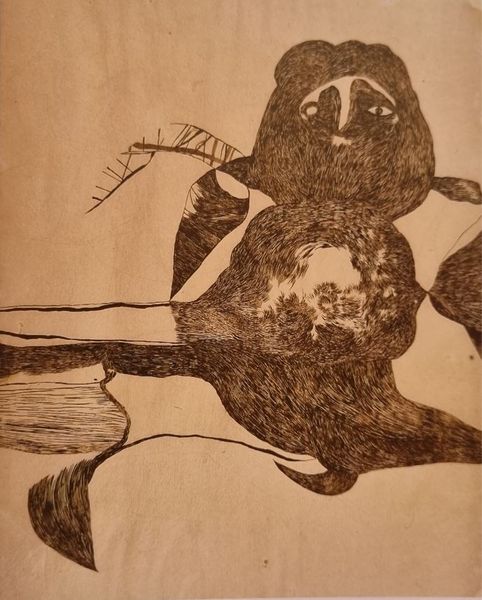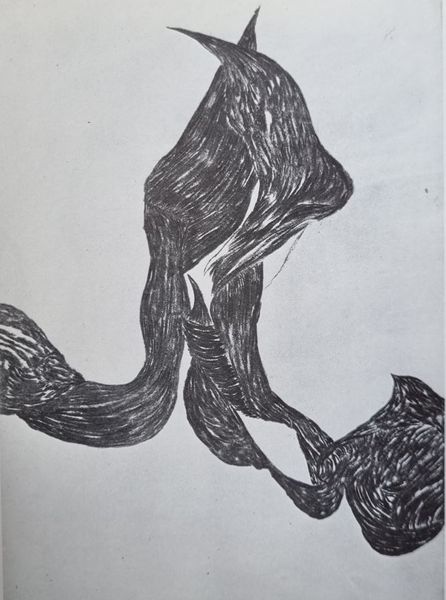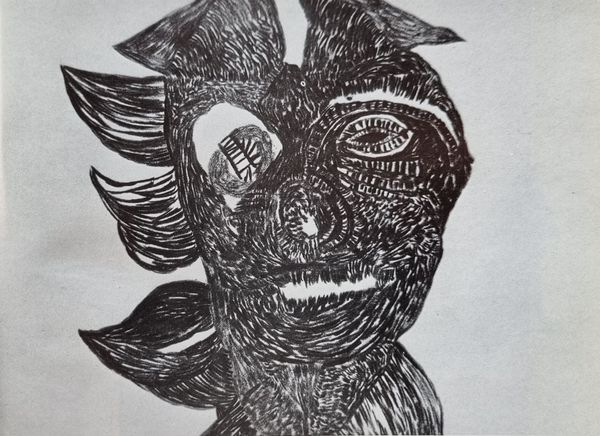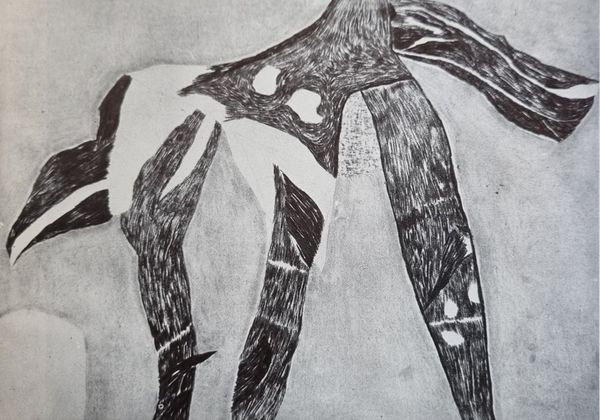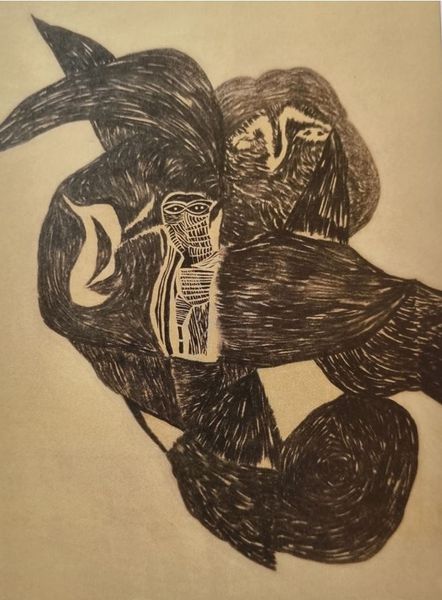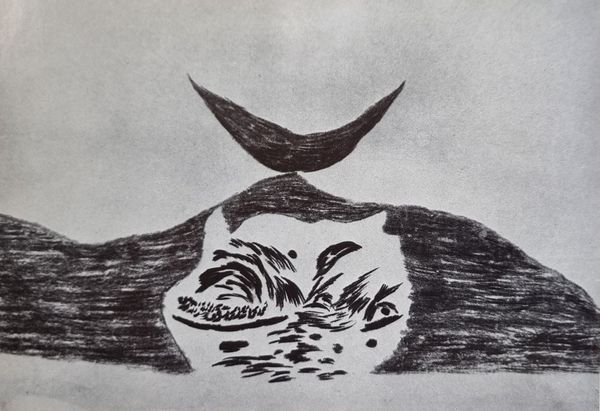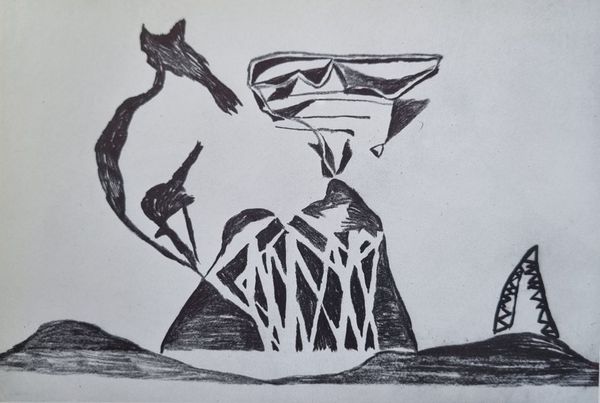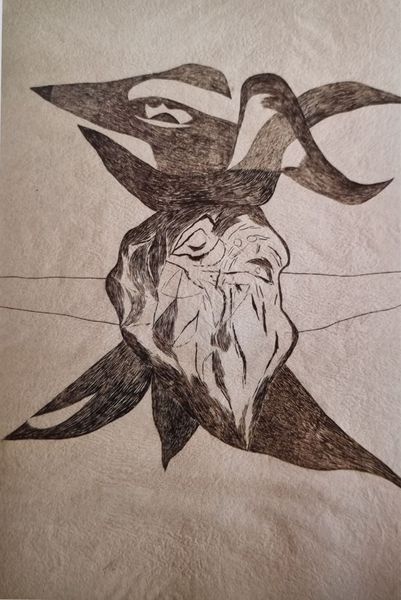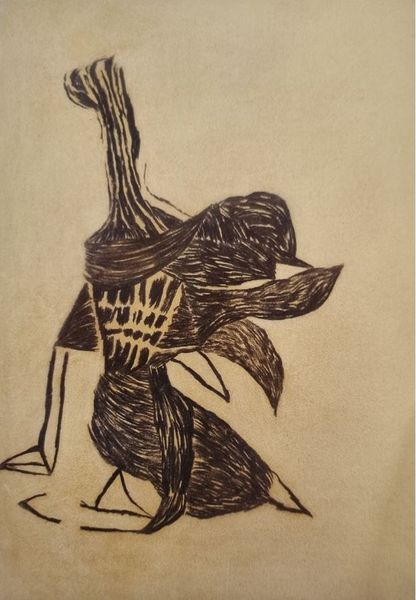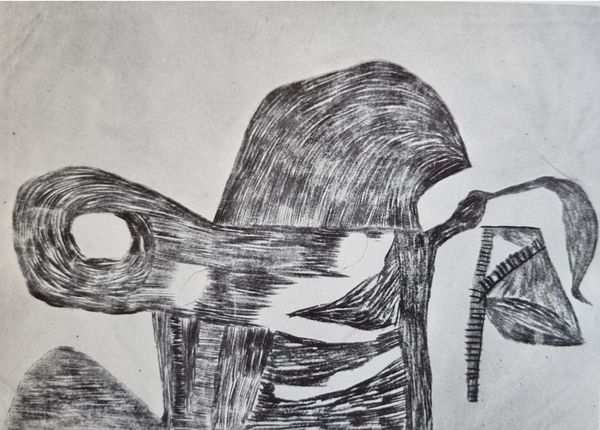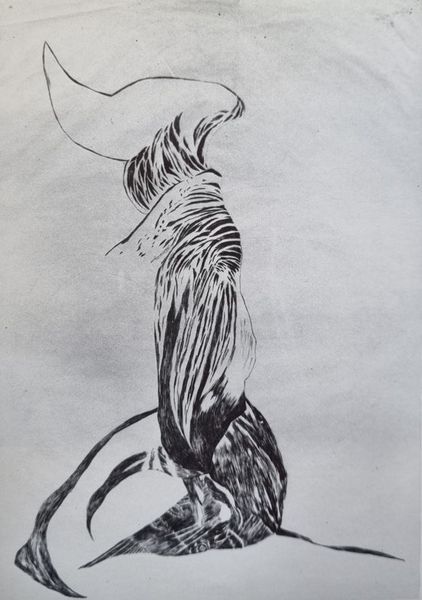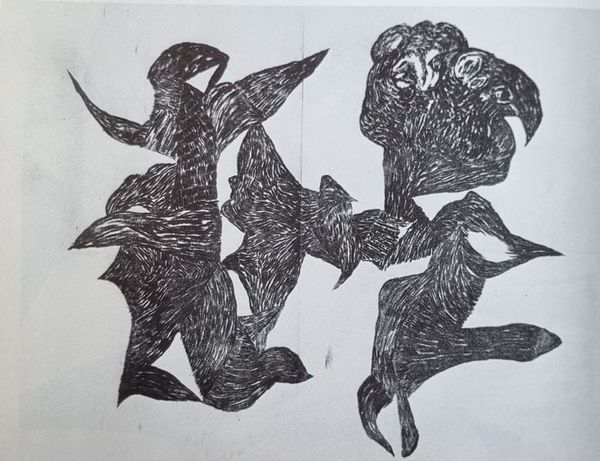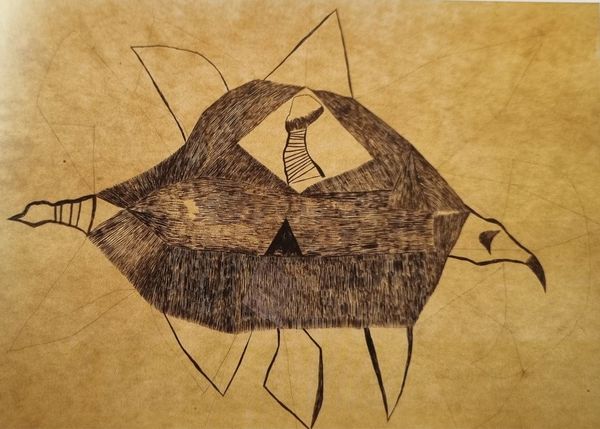
Copyright: Public domain
Vajda Lajos created this ink drawing, Bagolyfejü, or Owl-head, in 1939. The looming, dark figure seems to emerge from a dreamscape, its dualistic form evoking a sense of unease. Made in Hungary on the eve of World War II, Vajda’s art grappled with the looming crisis. In the late 1930s, there was increasing political instability as Hungary allied itself with Nazi Germany, resulting in oppressive laws and social division. Vajda’s imagery, often melancholic and symbolic, reflects the historical trauma and the fracturing of identity prevalent in the interwar period. Like many artists in politically turbulent times, Vajda sought to express the unspeakable through surreal and distorted forms, thereby critiquing the rise of destructive ideologies. Understanding this art requires us to delve into the cultural and political history of interwar Hungary. By examining the artist’s biography, the social history of the period, and the institutional frameworks that shaped artistic production, we can begin to understand how art serves as both a reflection of and a resistance to its time.
Comments
No comments
Be the first to comment and join the conversation on the ultimate creative platform.
